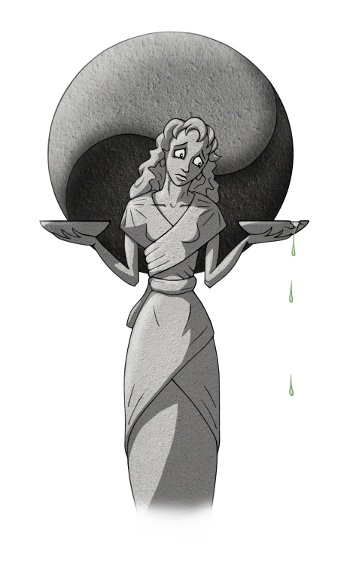Many thanks to Tristan Morris for creating a beautiful illustrated hardcover print edition of the site

 |
|
 |
 |
 |
|
 | |
 | |

To mark the solemn occasion of the two-hundredth case being entered into the annals of the Temple, I asked the nun Yíwen to prepare for me a long, informative, and heavily-footnoted treatise on the history of the Boolean data type. To my dismay I received this bit of doggerel instead. Many apologies to those of you who came here seeking edification.—Qi.

You might
not know
that long
ago
most words,
when new,
came two
by two:
you / me,
aye / nay,
he / she,
we / they,
girl / boy,
yang / yin,
grief / joy,
out / in.
This is,
you see,
our ten-
dency—
treat all
in sight
as black
or white:
yes / no,
old / new,
stop / go,
false / true,
live / dead,
here / gone,
tail / head,
off / on.
No place
halfway.
No shades
of gray.
Just hit
or miss.
Just that
or this:
strong / frail,
smile / frown,
pass / fail,
up / down,
quick / slow,
luck / fate,
high / low,
love / hate.
But if
you dare
to look
with care—
to stare
foursquare
at each allegedly opposing pair,
fully aware
you must distrust your every instinct, and forswear
that inborn, impulsive tendency
to impose binary simplicity—
then eventually
you may see
that almost nothing
is wholly one thing or another.
For words—like floats and ints and bools—
are merely tools,
providing only crude approximation
for the facilitation of communication.
And any string of words, however nice,
at best is imprecise,
while at worst may be tragically misleading
(and that includes the sentence you’re currently reading).
So here’s
my rule:
don’t think
in bool.
Leave cer-
tainty
to cir-
cuitry
(unless
you trust
the world
is just ...
sane / mad,
short / long,
good / bad,
right / wrong,
left / right,
all / none,
day / night,
oh / one).
Un estratto da The Codeless Code, di Qi (qi@thecodelesscode.com).
Distribuito sotto l' Creative Commons Attribution-NonCommercial 3.0 Unported License.
*Many thanks to Stephen Loftus-Mercer and David Kotsonis for pointing out some tpyos. I mean typso. I mean things I spelled wrong.














